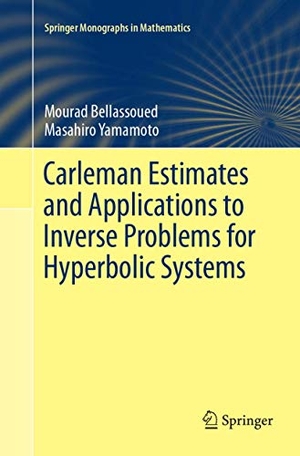Für statistische Zwecke und um bestmögliche Funktionalität zu bieten, speichert diese Website Cookies auf Ihrem Gerät. Das Speichern von Cookies kann in den Browser-Einstellungen deaktiviert werden. Wenn Sie die Website weiter nutzen, stimmen Sie der Verwendung von Cookies zu.
Cookie akzeptieren
Masahiro Yamamoto / Mourad Bellassoued
Carleman Estimates and Applications to Inverse Problems for Hyperbolic Systems
- Springer Japan
- 2018
- Taschenbuch
- 272 Seiten
- ISBN 9784431568308
This book is a self-contained account of the method based on Carleman estimates for inverse problems of determining spatially varying functions of differential equations of the hyperbolic type by non-overdetermining data of solutions. The formulation is different from that of Dirichlet-to-Neumann maps and can often prove the global uniqueness and Lipschitz stability even with a single measurement. These types of inverse problems include coefficient inverse problems of determining physical parameters in inhomogeneous media that appear in many applications related to electromagnetism, elasticity, and related phenomena. Although the methodology was created in 1981 by Bukhgeim and Klibanov, its comprehensive development has been accomplished only recently. In spite
Mehr
Weniger
zzgl. Versand
in Kürze